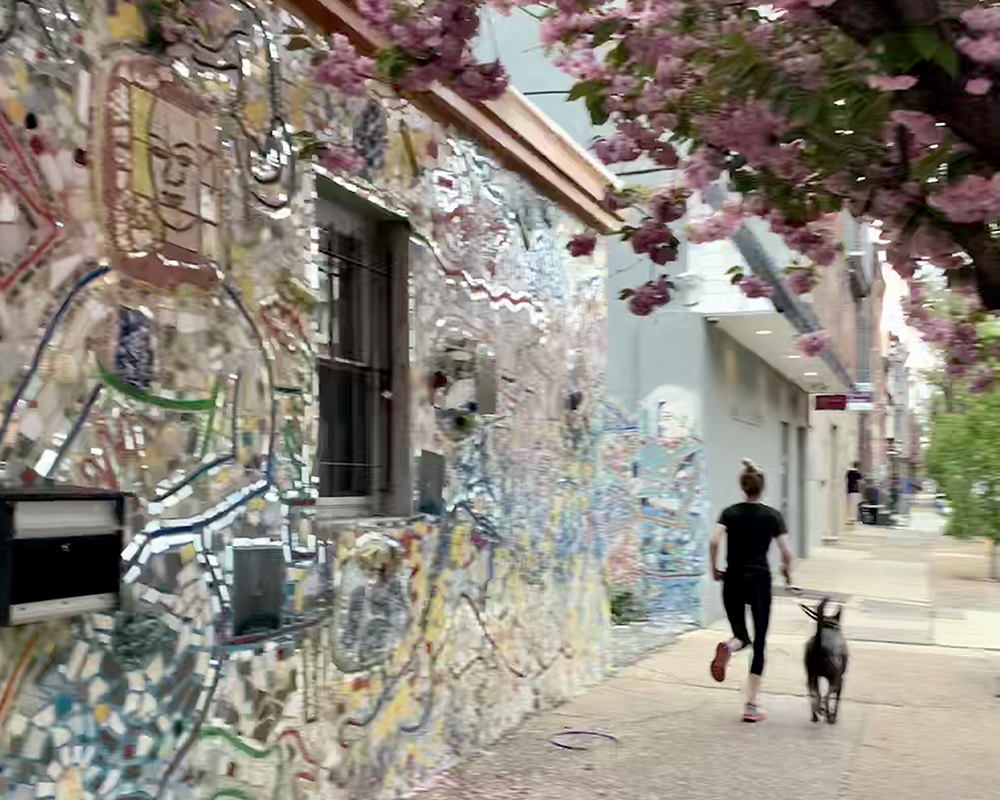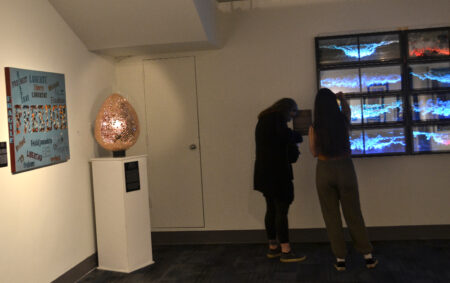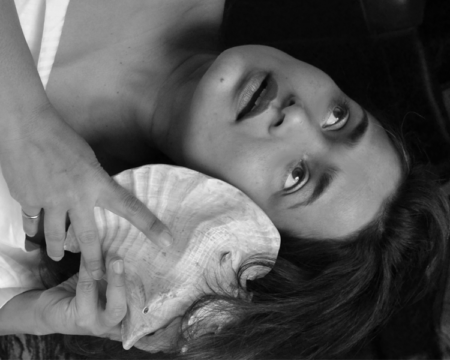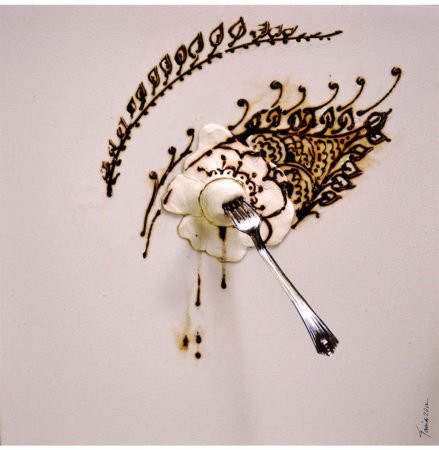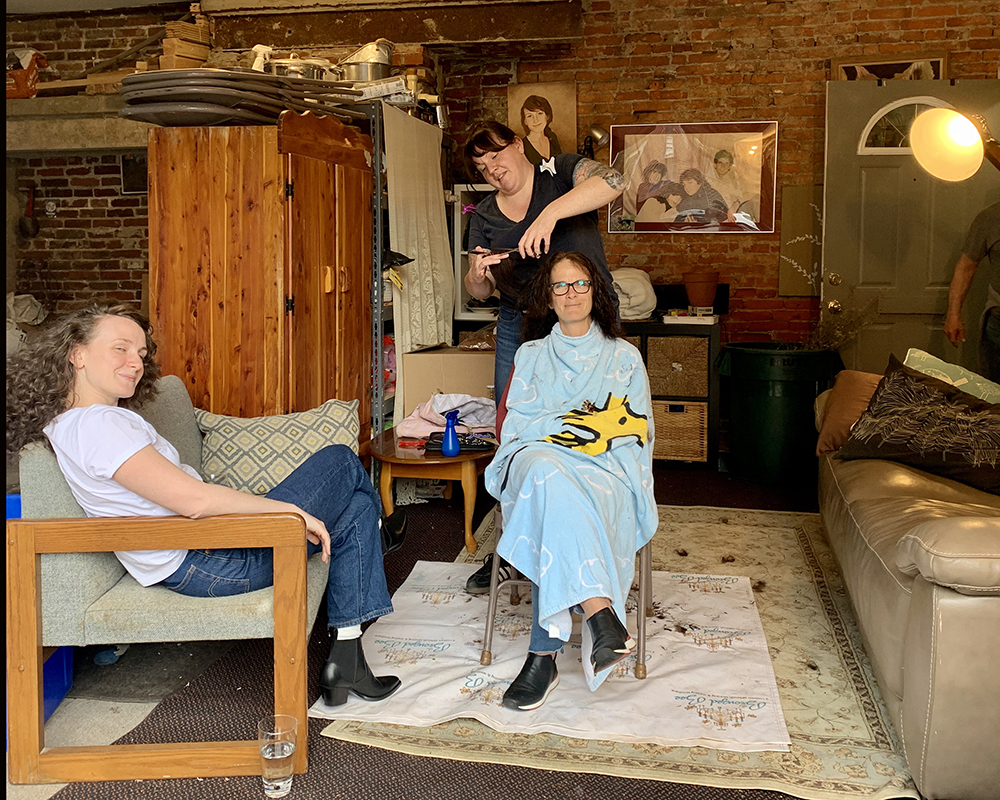
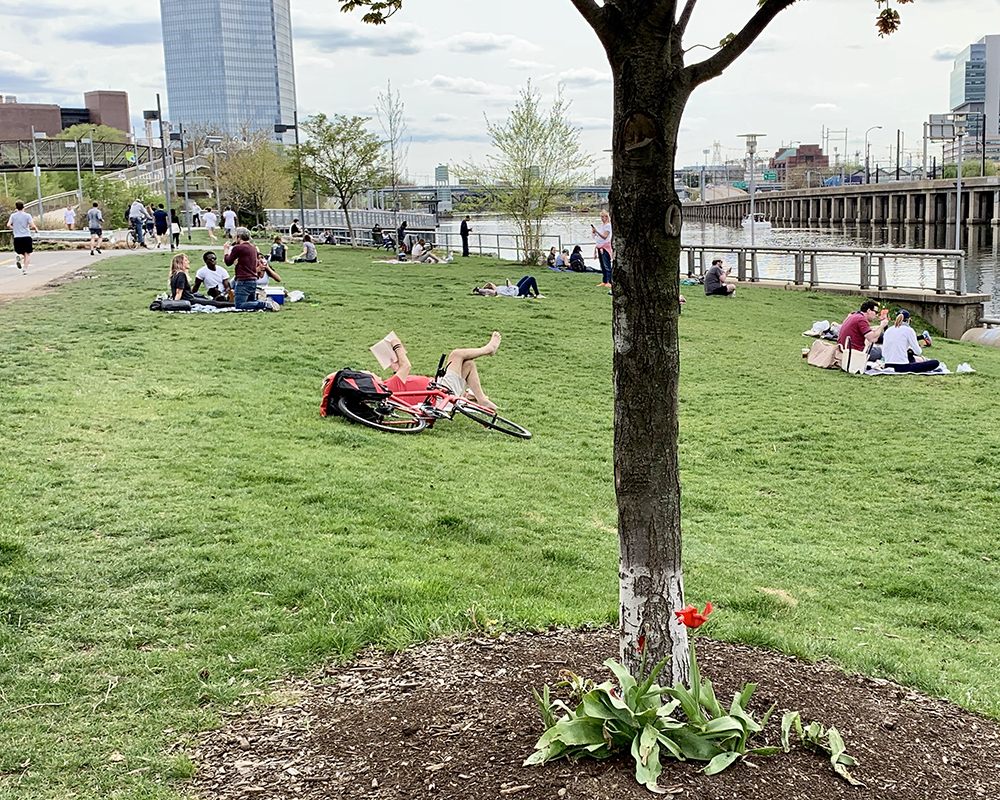
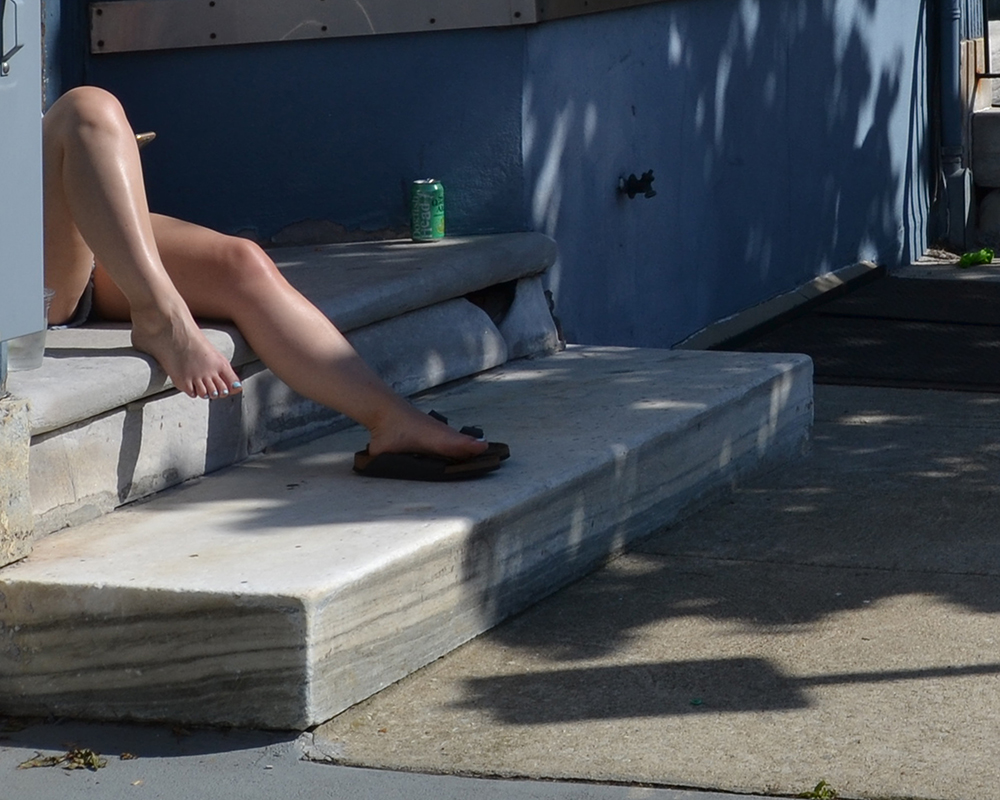
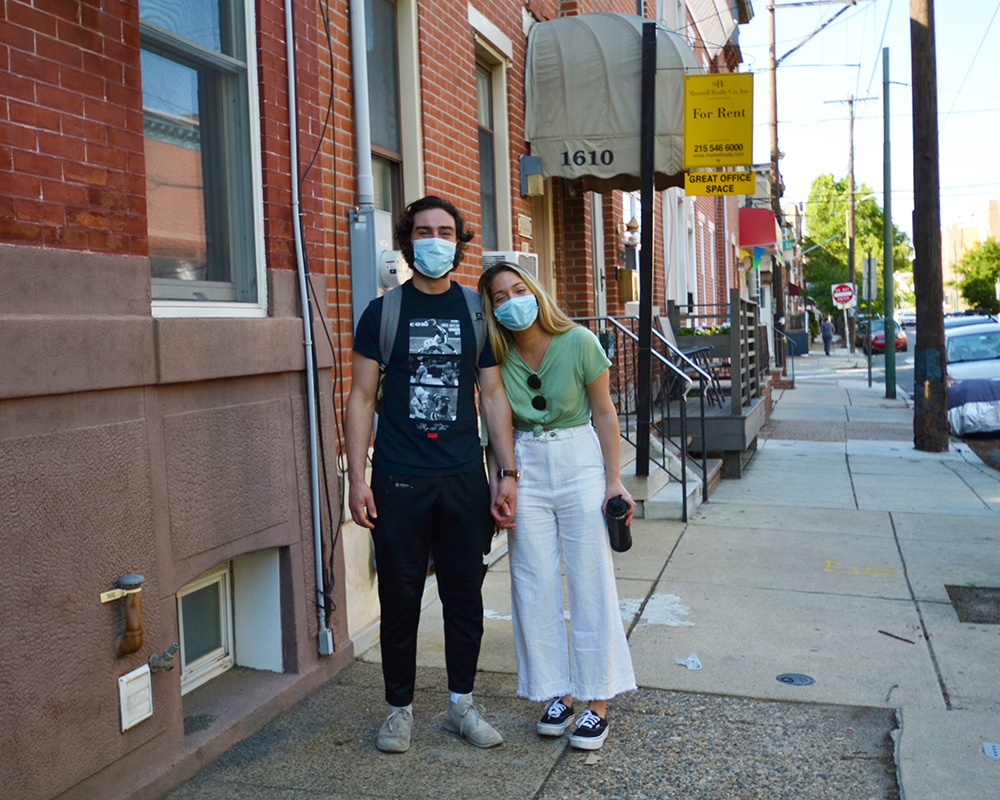
No, I am no economist, but the COVID crisis compels me to tell a story of how the communities in Philadelphia are utilizing energy and resources- toilet paper, for instance! In the words of Ursula Le Guin, “there have been great societies that did not use the wheel but there have been no societies that did not tell stories.” During my daily walks, I have seen this apply particularly to the people of Philadelphia, whose spirit unfolds in the most surprising ways. Yes, the quarantine is stalling the economy and social lives, making us wear gloves and masks, wash hands and wipe doorknobs a thousand times, but what I can’t help but notice is that it is also triggering a wave of innovation where people are reflecting on their needs and making a call on the use of resources. Families gather outside their homes sharing a beer 6 feet apart. Rules of the kids’ games are adjusted accordingly to keep social distancing. Some have picked up skills to give a haircut or grooming to those in the family, others are doing with makeshift salons in their garages! Many restaurants are thriving on takeout business. Eating out in some restaurants is now taking place in cars, parks, and public spaces. Reading books for fun has made it back to the ranks again! Enjoying the outdoors, either laying in a hammock, biking, skating, or yoga on a mat are indulgences for all to enjoy free of cost!
Going forward we might have to move away from “the market”, and “the state”, breaking down the dichotomy of rigid categorizations, solving the problem of the economy at a local grass-root level. With the rapid rate of job loss, we can strive to tackle hunger within the community. I draw inspiration from the Whoa Nellie Farm, PA, and how it dealt when faced with a transportation challenge with its milk production. The Brown family bottled its surplus milk instead of throwing it away. The extra effort increased profit for the farm and made it possible for them to make the excess milk available to the food banks for the needy. The world’s restaurants and cafes account for 30% of all calories consumed. The shutdown in their demands has left many of the farmers stranded. People staying home eat differently, going for processed and pre-packaged foods, so redirecting their produce to the food markets is not possible. A change in eating habits at home will utilize the surpluses at an overall greater saving for families, part of the surplus can go towards feeding the hungry. By targeting the local population, transportation costs may be surpassed. With 20.5 million job losses in April 2020 alone, food wastage now at 40%, sounds like a crime!
While the rate of job losses is alarming, is income alone an accurate indicator of good living? Quality of life depends on how one conducts her own life for which one does not consult the national index. A rich man’s dollar and a poor man’s dollar cannot be evaluated in the same manner as it fulfills different aspects of their needs. However, the rich and the poor enjoy the same freedom and capability to function and flourish in society albeit in different ways. For example, the rich in the United States demand gluten-free crunchy snacks made of lentil, quinoa, and kale whereas in the food capital Madrid supermarkets, potato chips fried in olive oil, lightly salted, is commonly understood as a crunchy snack food and the only one available. It satisfies the itch for crunch and salt no less than its fancy counterparts on the shelves of US markets. Being spoilt for choices does not necessarily enhance consumer satisfaction. Disability to convert income into good living has relevance to pricing and waste. Innovative ways to reduce waste and distribute surplus by local farms and markets may go a long way to overcome hunger in the local neighborhoods. Those benefitting from the giveaways may be required to participate in the distribution logistics. As Schumpeter asserts, in an economy of change and innovation profit is not a “surplus value”, stolen from workers, rather it can become a source of livelihood for the workers.
Innovation may be called for even in how leisure time is spent. Apart from the “no sail” from CDC which has left hundreds of cruise ship workers out of a job, the cruise companies may have to pay out huge amounts for the coronavirus pandemic. Amusement parks are putting COVID health directives in place before opening for the season. Not to mention many schools and colleges that will remain closed for the rest of the year. This may be a time to consider freedom for the rich and the poor alike to enjoy public spaces and parks. Walking, running biking and other types of outdoor physical activities will not only be a free source of enjoyment but add to public health. Perhaps more than ever we need to assume ownership of public spaces and parks and do our share to keep them clean.
The measure of wellbeing in society may take into consideration the availability of provisions for sustenance, food, shelter, health, etc. The freedom to achieve well-being is a matter of what people can do and be, and thus the kind of life they are effectively able to lead. The capability approach pioneered by Amartya Sen rests on (1) the assessment of individual well-being; (2) the evaluation and assessment of social arrangements; and (3) the design of policies and proposals about social change in society. Extensive public discussion sharing values and resolve in a transparent democratic manner addressing inheritance of past transgressions at global and local levels may be the start of progress towards the attainment of wellbeing at a societal level. Implementation of policies at a local level may be piloted and measured for effectiveness and checked for avoidance of arbitrariness.
One last anecdote – a few years ago, at the Leela hotel in New Delhi, a waiter came in with rose petals to add fragrance to the bathwater of my 5-year-old who read a card by the jacuzzi inviting guests to request for it and made the call herself! What I noticed were the crowded shanties, dusty roads, and the throng of the population beyond the boundary walls just past the manicured lawn and seasonal flowers. Not quite tall enough to look through the window of the suite my 5-year-old enjoyed the rose petals in her bath. My “red-pill moment” however was inescapable! Such a moment presents itself to the .01% of the country’s wealthy who can perhaps contribute towards some of the COVID related public programs. Afterall a 5-star experience is all too easily tainted by the grim reality staring down at you. Incorporating Innovation and independent thinking in a small scale might be baby steps towards “Conceptual Age” as Daniel Pink puts it. Equipped with all the data from information age, it is time we utilize our artists and creative thinkers, the right brain people, to imagine an inclusive and efficient and minimal tomorrow that allows freedom of growth.

